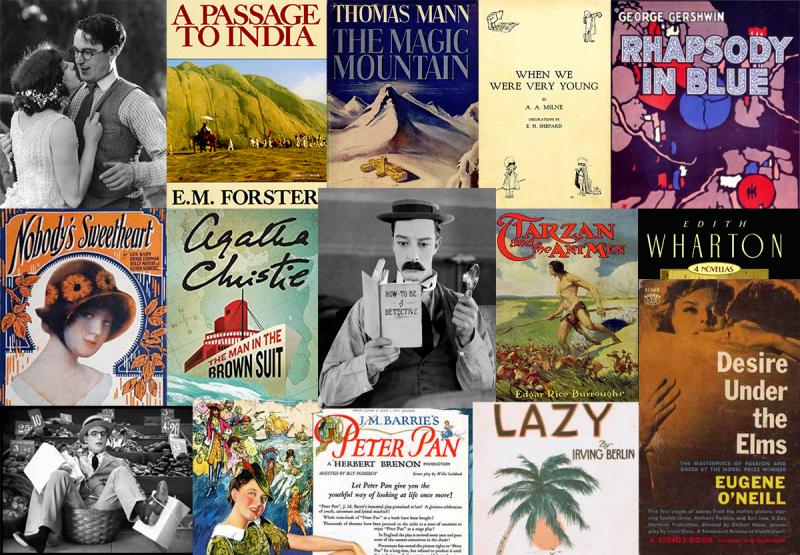
As we ring in the New Year, authors have one more reason to celebrate: another batch of works has entered the public domain in the United States. Last year, the new year brought works published in 1923 that had previously been protected by copyright into the public domain—the first time in 20 years that published works have entered the public domain due to copyright expiration. This January 1, the trend continued as we welcomed works published in 1924 that were previously protected by copyright into the public domain. Many of these works have been out of reach long beyond their creators’ lifetimes and for decades after their commercial potential was exhausted.
According to the Center for the Study of the Public Domain at Duke, new public domain works include Thomas Mann’s The Magic Mountain, E. M. Forster’s A Passage to India, Edith Wharton’s Old New York, Agatha Christie’s The Man in the Brown Suit, and A. A. Milne’s When We Were Very Young.
While 2020 brings certainty that works first published in the United States in 1924 are in the public domain, changes in copyright duration and renewal requirements during the 20th century mean that works first published in the United States between 1925 and March 1, 1989 could also be in the public domain because their copyrights were not renewed or the copyright owner failed to comply with other “formalities” that used to be required for copyright protection. Analysis undertaken by the New York Public Library reveals that approximately 75% of copyrights for books were not renewed between 1923-1964, meaning roughly 480,000 books from this period are most likely in the public domain.
Once in the public domain, works can be made freely available and can be adapted into new works of authorship. Last year, we covered some of the benefits of the public domain:
- Public domain works can be remade, shared, and added to the commons for all to enjoy, including by adapting printed books into audio books or by adapting classic books into interactive forms like video games;
- Scholars benefit from the pubic domain because it provides improved access and richer historical context for research;
- The public domain provides opportunities to freely translate works to help fill the gap in stories available to children in their native language; and
- Students can more readily access public domain materials to supplement and deepen their understanding of assigned texts.
Authors Alliance looks forward to the new public domain works from 1924 being made more available and to the new works that are created by building upon this rich collection.
Discover more from Authors Alliance
Subscribe to get the latest posts sent to your email.
